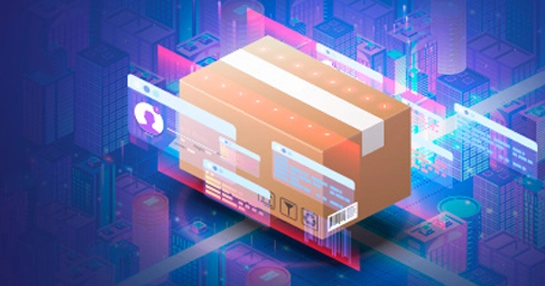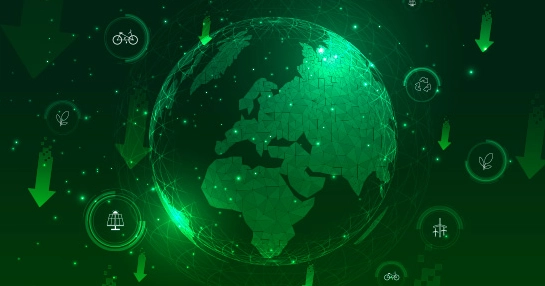What is Sustainable Procurement?
Purchasing decisions that aim to meet an enterprise’s requirement for goods or services, and at the same time minimize the impact on environment from such purchase can be termed as sustainable procurement.
The concept of sustainable procurement has fast evolved from “good to have” to “must have” in recent years. Not just as a means to ensure compliance and keeping it as a part of corporate social responsibility, enterprises that have an active framework in place to make sustainability a part of their procurement process enjoy higher acceptance among current and prospective clients.
Ready for Procurement Success? GEP Has the Solutions
Achieve ESG goals & drive cost savings with AI-powered sustainable procurement solutions
Why is Sustainable Procurement Important?
Sustainable procurement transcends traditional cost-optimization models, emerging as a sophisticated strategic lever for organizational resilience and value creation. Sustainable procurement represents a holistic approach to managing enterprise-wide risks while unlocking transformative business opportunities.
The contemporary procurement landscape demands a quantum shift from transactional purchasing to strategic ecosystem engineering. Organizations that view suppliers as collaborative partners in sustainability can develop adaptive, regenerative supply chains capable of responding to systemic challenges such as climate volatility, resource constraints and technological disruption. These organizations don't merely reduce risks; they create competitive intelligence platforms that anticipate and shape market dynamics.
Economic modeling increasingly demonstrates that sustainable procurement drives superior financial performance. Robust sustainable procurement strategies are known to lower the total cost of ownership and drive more innovations through strategic supplier relationships.
Technological convergence further amplifies sustainable procurement's strategic potential. Advanced analytics, blockchain, and AI enable unprecedented supply chain transparency, enabling real-time tracking of environmental and social performance metrics. This digital infrastructure transforms procurement from a back-office function into a strategic intelligence center driving organizational agility.
Sustainable procurement addresses increasingly complex stakeholder expectations. Investors, regulators, and consumers now demand comprehensive environmental, social, and governance (ESG) performance. By embedding sustainability deep into procurement, organizations can convert compliance requirements into strategic differentiation, positioning themselves as responsible, forward-thinking enterprises.
Benefits of Sustainable Procurement
When implementing sustainable procurement, businesses look at tangible benefits in the short- to mid-term, such as:
- Create a greater social impact instead of randomly contributing to philanthropic causes
- Boost profits and enhance CSR, and in turn goodwill
- Avoid risks in terms of ethics, legal as well as brand image
- Create a point of differentiation for clients and customers
- Able to serve evolving consumer preferences
Sustainable procurement helps companies achieve the aforementioned and some more. With governments across the world coming up with sustainability legislations, enterprises look at ensuring compliance with environmental and social laws as the one of the highlights.
Three Major Pillars of Sustainable Procurement
There are three key pillars of sustainable procurement — economics, environment and social.
- Economics is the first thing that comes up at the discussion table with all business stakeholders. The cost has to be justified from the very beginning. With disruptions across the globe, businesses are wary of investments where the returns are not immediately visible. As a result, enterprises look at sustainable investment practices that enable revenue growth along with low total cost of ownership (TCO) throughout the life cycle.
- As part of sustainable procurement, enterprises seek to minimize the impact on environment from purchasing. Enterprises have to comply with local legislations that demand reduced CO2 emissions and a minimum carbon footprint from any activity in an enterprise’s procurement ecosystem — to the extent that it’s not just sustainable, but ethical too.
- Enterprises need to deliver on their social goals that are laid down in their sustainable procurement framework. Most of these revolve around protecting human rights, preventing child labor, ensuring health and safety with the organization and in their partners’ ecosystem.
Best Practices in Sustainable Procurement
Building a sustainable procurement practice requires taking into account external as well as internal factors — because inefficiency can come from just about anywhere. Addressing the challenges needs a practical, hands-on approach with some of the sustainable procurement best practices.
Evaluate the Existing Setup
Studying the existing setup gives a fair idea of the capabilities that are there and what needs to be incorporated.
Create a Policy Framework
Creating a sustainable procurement policy framework can resolve most of the issues right at the onset of the transformation journey. The framework also prevents future issues by ensuring adherence.
Create Awareness
All stakeholders, internal or external, need to be on the same page so that organizational goals can be met with ease and well within the policy framework.
Optimize Collaboration
Open, consistent communication channels mean greater collaboration across the board, across all stakeholders, across all employees — leading to real-time feedback for policy makers.
Don’t Let Procurement Become a Hidden Barrier and Hold You Back
Explore how leading firms are using AI to transform procurement into a strategic driver of expansion
Challenges for Sustainable Procurement
Implementing sustainable procurement is not without its challenges. The key to its implementation is getting everyone onboard — that is, all stakeholders must come together and agree on a common framework. A small contradiction can potentially become a hinderance to implementation of the sustainable procurement process.
Cost estimation is another challenging factor that may require a lot of deliberation and analysis. This is the one factor that can throw the entire calculation of profit and loss wayside, especially for the short term. However, once an enterprise is through with this phase, it can witness cost and risk reduction, which eventually leads to revenue growth.
Sustainable Procurement Requirements
Sustainable procurement requirements have become increasingly important in recent years, and many organizations continue to set ambitious sustainability targets to reduce their carbon footprint and minimize their environmental impact. Procurement leaders need to be aware of these targets and ensure their enterprise’s procurement processes align with its sustainability goals.
Companies can initiate sustainable procurement practices and make a positive impact on the environment and society, there are however certain requirements that need to be fulfilled, including:
Leadership Commitment
The leadership or senior management must have a demonstrated commitment to sustainability and should be able to communicate the importance of sustainable procurement to the organization.
Stakeholder Engagement
Stakeholders — such as suppliers, customers, and employees — need to be engaged so that they understand the organization's sustainability goals and expectations.
Procurement Policy
Enterprises need to ensure that their procurement policy is comprehensive and includes sustainability requirements and guidelines for evaluating suppliers' environmental and social performance.
Supplier ESG Evaluation
Procurement professionals should evaluate suppliers' environmental and social performance as part of the supplier selection process. Suppliers who do not meet the sustainability criteria should be disqualified.
Supplier Performance Monitoring
Enterprises should monitor suppliers' performance regularly to ensure that they continue to meet sustainability requirements.
Training and Awareness Programs
Creating a sustainable procurement practice requires procurement professionals to undergo training and awareness programs to better understand the importance of sustainability, and it’s a must moving forward.
Sustainability Reporting and Communication
Sustainability reporting is a major step toward commitment to maintaining transparency on sustainability goals of an enterprise. It sends clear communication to all stakeholders as well as prospective clients and partners about the enterprise’s progress and the impact it’s making on the environment and society.
Value of Sustainable Procurement in Business Transition
Working toward sustainable procurement shows the intent of an enterprise to align with its mission and vision statement. This could potentially increase an enterprise’s reputation and an image that it has the ability to stand resilient to market fluctuations. Most clients and customers look for partners that have sustainability embedded in their value chains. For enterprises, it’s not just for long-term revenue growth, but to stay ahead of regulatory changes and reduce transition risk.
Can Sustainable Supply Chains Be a Valuation Multiplier for Private Equity?
This GEP bulletin details why ESG is no longer just a checkbox but a core valuation driver
The Future of Sustainable Procurement
The future of sustainable procurement will be characterized by a radical reimagining of value creation, transcending traditional boundaries between organizational procurement and systemic global challenges. Emerging technologies and advanced predictive analytics will enable procurement functions to transform from cost-management centers into strategic ecosystem architects.
Artificial intelligence and machine learning will provide unprecedented capabilities for real-time supply chain mapping, enabling organizations to dynamically assess environmental, social, and governance risks with granular precision.
Blockchain and distributed ledger technologies will create transparent, immutable sustainability credentials, allowing instantaneous verification of supplier claims across complex global networks. The technological infrastructure will support a new procurement paradigm where sustainability is not an optional overlay, but a fundamental design principle embedded in every transactional and strategic decision.
The evolution of sustainable procurement will increasingly blur the lines between competitive strategy and collaborative innovation. Organizations will move beyond siloed approaches to sustainability, developing adaptive, interconnected ecosystems that can rapidly respond to global challenges like climate change, resource scarcity and social inequity. Procurement leaders will drive strategic orchestration, designing regenerative supply chains that generate positive ecological and social value while maintaining economic performance.
Advanced carbon accounting, circular economy principles, and biomimetic design will guide procurement strategies, enabling organizations to create closed-loop systems that minimize waste and maximize value creation. Emerging economic models such as circular economy will provide frameworks for procurement professionals to reimagine supplier relationships, transforming them from transactional interactions to collaborative partnerships focused on solving complex global challenges and generating value across economic, environmental, and social dimensions.
Conclusion
Drivers such as cost reduction, risk reduction and revenue growth have motivated companies to ensure sustainability across their supply chain, and this has been substantiated by several research reports. The key to moving toward sustainable sourcing is to not embrace every aspect of sustainability in one go, but to include one aspect at a time — and continue building sustainability metrics during the process over time.
FAQ
Measuring sustainability in procurement requires a comprehensive, multi-dimensional approach that goes beyond traditional metrics. Global organizations employ sophisticated frameworks combining quantitative and qualitative assessments across environmental, social, and economic dimensions. Key measurement methodologies include comprehensive carbon footprint analysis, supplier sustainability scorecards, life cycle assessments, and advanced data analytics platforms.
Organizations utilize standardized frameworks and standards such as GRI, CDP, and ISO 14001 to establish baseline measurements. Critical metrics encompass carbon emissions, water usage, waste reduction, supplier diversity, human rights compliance and economic value generation. Advanced technologies such as blockchain and AI enable real-time tracking and verification of sustainability performance, allowing procurement teams to develop dynamic, evidence-based sustainability strategies that provide granular insights into the ESG impact supply chains.
The four fundamental elements of sustainable procurement form a holistic framework for strategic value creation.
First, environmental stewardship focuses on minimizing ecological impacts through carbon reduction, resource efficiency, and circular economy principles.
Second, social responsibility addresses human rights, labor practices, diversity, and community engagement throughout the supply chain.
Third, economic optimization ensures that sustainable practices deliver tangible financial value, balancing cost-effectiveness with long-term strategic advantages.
Fourth, governance and transparency create robust accountability mechanisms, including comprehensive reporting, ethical sourcing standards, and continuous improvement processes. These interconnected elements transform procurement from a transactional function into a strategic driver of organizational sustainability, enabling companies to generate multilayered value across environmental, social, and economic dimensions.
Sustainable procurement faces complex systemic challenges that require sophisticated organizational transformation. Primary barriers include limited internal capabilities and sustainability expertise, making it difficult to develop comprehensive strategies. Cost considerations often create short-term financial pressures that discourage sustainable investments, despite long-term benefits. Supply chain complexity and global fragmentation make comprehensive sustainability tracking challenging, particularly for organizations with extensive, multi-tiered supplier networks.
Regulatory inconsistencies and lack of standardized sustainability reporting frameworks create additional complexity. Cultural resistance and traditional procurement mindsets further impede progress, with many organizations struggling to integrate sustainability into core business processes. Technology limitations and data quality issues also constrain effective measurement and implementation of sustainable procurement strategies.











